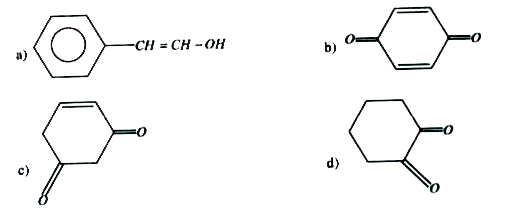For the process
X(g)+e−→X−(g),ΔH=x and X−g→Xg+e−,ΔH=y
Select correct alternat :Solution in Telugu
ionisation energy of X−(g) is y
electron affinity of X(g) is x
electron affinity of X(g) is -y
all are correct statements.
The correct Answer is:D
Step by step video, text & image solution for For the process X_((g)) + e^(-) rarr X_((g))^(-), Delta H =x and X_(g)^(-) rarr X_(g) + e^(-) , Delta H = y Select correct alternat : by Chemistry experts to help you in doubts & scoring excellent marks in Class 11 exams.
Topper's Solved these Questions
- BOOK - AAKASH SERIESCHAPTER - PERIODIC CLASSIFICATIONEXERCISE - OBJECTIVE EXERCISE - 1 (ELECTRONEGATIVITY)15videos
PERIODIC CLASSIFICATION
- BOOK - AAKASH SERIESCHAPTER - PERIODIC CLASSIFICATIONEXERCISE - OBJECTIVE EXERCISE - 1 (VALENCY AND OXIDATION STATES)8videos
PERIODIC CLASSIFICATION
- BOOK - AAKASH SERIESCHAPTER - PERIODIC CLASSIFICATIONEXERCISE - OBJECTIVE EXERCISE - 1 (IONISATION POTENTIAL)25videos
PERIODIC CLASSIFICATION
- BOOK - AAKASH SERIESCHAPTER - ISOMERISM EXERCISE - ADDITIONAL PRACTICE EXERCISE ( PRACTICE SHEET (ADVANCED) INTEGER TYPE QUESTIONS)10videos
ISOMERISM
- BOOK - AAKASH SERIESCHAPTER - PERIODIC PROPERTIESEXERCISE - LEVEL-II (TYPE -II) (PRACTICE SHEET -3 (SUBJECTIVE/ ANALYTICAL TYPE QUESTIONS ))8videos
PERIODIC PROPERTIES
Similar Questions
Pauling's electronegativity is based on
02:55View SolutionThe stable oxidation state of Thallium, a IIIA group element is
02:19View SolutionHow many ionisation energies can carbon have ? Electron configuration of carbon
in Ground state1s22s22p1x2p1yin Excited state1s22s12p1x2p1y2p1z09:12View SolutionTautomerism is exhibited by X number of compounds among the following. What is X.
 04:47View Solution
04:47View SolutionWhat is the valency possible to Arsenic with respect to oxygen and hydrogen?
07:44View SolutionLet F(x)=f(x)g(x)h(x) for all real x,wheref(x),g(x),andh(x) are differentiable functions. At some point x0,F′(x0)=21F(x0),f′(x0)=4f(x0),g′(x0)=−7g(x0), and h′(x0)=kh(x0). Then k is________
01:38View SolutionLet f(x)andg(x) be two continuous functions defined from R→R , such that f(x1)>f(x2)andg(x1)<g(x2)∀x1.x2. Then find the solution set of f(g(α2−2α)>f(g(3α−4))
01:43View SolutionIf f(x)=x^(5)+x^(2)+1 has roots x_(1),x_(2),x_(3),x_(4),x_(5) and g(x)=x^(2)-2 then g(x_(1))g(x_(2))g(x_(3))g(x_(4))g(x_(5))-30g(x_(1)x_(2)x_(3)x_(4)x_(5))=
04:30View Solutionf:{1,2,3,4}rarr{1,4,9,16} and g:{1,4.9,16)rarr{1,(1)/(2),(1)/(3),(1)/(4)} are two bijective functions such that x_(1)>x_(2)rArr f(x_(1)) g(x_(2)) then f^(-1)(g^(-1)((1)/(2))) is equal to
03:36View SolutionIf p(x)=x^(5)+x^(2)+1 and p(x)=0 has zeros x_(1),x_(2),x_(3),x_(4),x_(5) and quad if g(x)=x-2 then find -g(x_(1))g(x_(2))g(x_(3))g(x_(4))g(x_(5))
03:09View SolutionX_((g))+e rarr X_((g))^(-) +E , Here ''E'' is
05:10View SolutionH_(2)O_((g)) rarr H_((g))+OH_((g))Delta H = x_(1) OH_((g)) rarr H_((g))+O_((g))Delta H = x_(2) Based on the these value, BE of O-H bond is
06:15View SolutionConsider the following reactions: I. C(s) + 1/2 O_(2)(g) rarr CO(g)," "Delta H_(1) = x_(1) II. CO(g) + 1/2 O_(2)(g) rarr CO_(2)(g), " "Delta H_(2) = x_(2) III. C(s) + CO_(2)(g) rarr 2CO(g)," "Delta H_(3) = x_(3) Select the correct statements:
01:17View SolutionH_(2)(g) + 1/2O_(2)(g) rarr H_(2)O (l) , BE (H - H) = x_(1) , BE (O = O) = x_(2) , BE(O-H) = x_(3) Latent heat of vaporization of liquid water into water vapour = x_4 then Delta H_(f) (heat of formation of liquid water) is:
View SolutionFor the chemical reaction
3X(g)+Y(g)⇔X3Y(g),
the amount of X3Y at equilibrium is affected byView Solution

